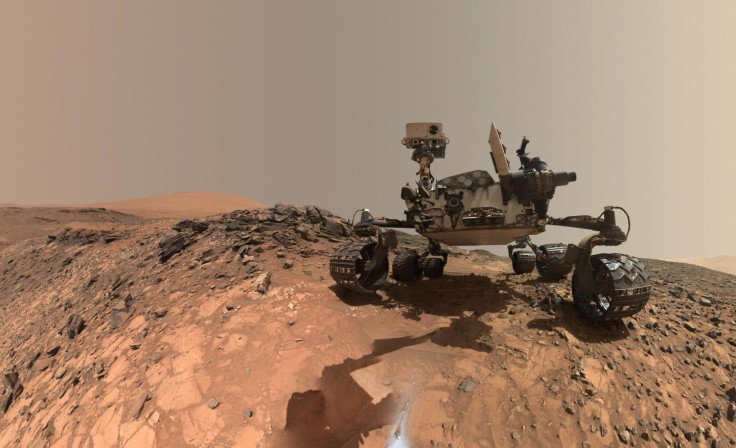One Year After Malfunction, NASA Tests New Mars Rover Drilling Technique

The Curiosity Rover’s drill for sample collection stopped working properly nearly a year ago but instead of giving up on the task of collecting and analyzing samples, NASA is looking for a new way to use the drill.
Originally, the rover would deploy two stabilizers, one on either side of the drill bit to the rock identified for sampling. Then the bit would extend and rotate until it broke the surface of the rock and created a sample, according to NASA. That sample would then be delivered to the laboratory inside the rover where it could be analyzed. The rover did this 15 times over the course of three years prior to the drill’s feed mechanism breaking.
The team that works on the Curiosity decided that rather than try to use the unreliably feed mechanism it would be best to use an alternative method to drill and get samples. Currently those involved in the mission are working on possible techniques to employ to resume drilling in the next few months. These techniques will be tested on Earth before tried out wit the rover on Mars.
The rover tweeted out, "Ain’t what you do; it's the way that you do it. Testing alternate techniques that may help me regain use of my drill," on Monday.
Ain’t what you do; it's the way that you do it. Testing alternate techniques that may help me regain use of my drill https://t.co/aZrqGRG0LD pic.twitter.com/KLsxIC7FDF
— Curiosity Rover (@MarsCuriosity) October 23, 2017
Last week, though the drill did not collect any samples, the drill bit did touch the surface of Mars for the first time in more than 10 months. It applied some pressure and sideways movements to take measurements with a force sensor but this was the first time any of this was done without the stabilizers in place. The reason for this test was to determine how well the sensor can sense force exerted in a side-to-side manner rather than just downward force, the chief engineer for the return-to-drilling mission told NASA. The testing on Earth will help researchers know how to best use the data collected from the sensor.
The researchers are also working on coming up with a new way to deliver the samples to the lab on board the rover because the previous process required that the drill bit be withdrawn, not extended like it will be in the future use of it. "The next step is to assess the force/torque sensor on Mars. We've made tremendous progress in developing feed-extended drilling, using the rover's versatile capabilities beyond the original design concepts. While there are still uncertainties that may complicate attempts to drill on Mars again, we are optimistic," Steve Lee, the deputy project manager at NASA’s Jet Propulsion Lab told NASA.
© Copyright IBTimes 2024. All rights reserved.





















